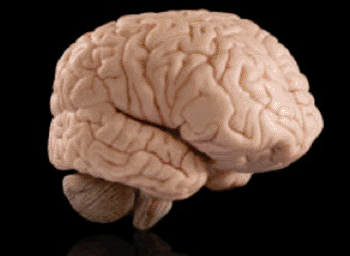Ultrahigh Resolution of 3D Human Brain Offered Free for Researchers
By LabMedica International staff writers
Posted on 03 Jul 2013
A milestone three-dimensional (3D) digital reconstruction of a complete human brain, called the BigBrain, for the first time reveals the brain anatomy in microscopic clarity at a spatial resolution of 20 micrometers, exceeding that of existing reference brains presently in the public domain. Posted on 03 Jul 2013
The new application is made freely available to the broader scientific community to facilitate the exploration of the field of neuroscience. Researchers from Germany and Canada, who collaborated on the ultra-high resolution brain model, presented their project in the June 21, 2013, issue of the journal Science. “The authors pushed the limits of current technology,” said Science’s senior editor Peter Stern about the international scientific effort. “Such spatial resolution exceeds that of presently available reference brains by a factor of 50 in each of the three spatial dimensions.”

Image: The three-dimensional virtual brain is based on data from more than 7,400 tissue sections, each of them only 20 micrometers-thick, which were obtained from a human brain (Photo courtesy of werbefoto-burger.ch/Fotolia)
The sophisticated modern image processing technology reveal a never before seen look at the very fine specifics of the human brain’s microstructure (cellular level). The anatomic tool will allow for 3D cytoarchitectonic mapping of the human brain and act as an atlas for small cellular circuit data (single layers or sublayers of the cerebral cortex), explained the researchers.
Until recently, reference brains did not probe further than the macroscopic, or visible, components of the brain. Now, the BigBrain provides a resolution much finer than the typical 1 mm resolution from MRI studies.
The project “has been a tour-de-force to assemble images of over 7,400 individual histological sections, each with its own distortions, rips, and tears, into a coherent 3D volume,” said senior author Dr. Alan Evans, a professor at the Montreal Neurological Institute at McGill University (Montreal, QC, Canada). “This dataset allows for the first time a 3D exploration of human cytoarchitectural anatomy.”
Thin sections of a 65-year-old human female brain, which was embedded in paraffin wax, were cut with a special large-scale tool called a microtome. Then, the 20-micrometer-thick histologic sections were mounted on slides, stained to detect cell structures, and finally digitized with a high-resolution flatbed scanner so researchers could reconstruct the high-resolution 3D brain model. It took approximately 1,000 hours to gather the data. The final images revealed discrepancies in the laminar pattern between brain areas.
The new reference brain, which is part of the European Human Brain Project, serves as a powerful tool to advance neuroscience research and “redefines traditional maps from the beginning of the 20th century,” explained lead author Dr. Katrin Amunts from the Research Center Jülich and director of the Cecile and Oskar Vogt Institute for Brain Research at the Heinrich Heine University Düsseldorf (Germany). “The famous cytoarchitectural atlases of the early 1900s were simplified drawings of a brain and were based on pure visual analysis of cellular organization patterns,” added Dr. Amunts.
Because of the ernormous volume of this dataset, the researchers noted that there will be a drive by those who want to use it to develop new and helpful applications for visualization, data management, and analysis. “We plan to repeat this process in a sample of brains so that we can quantify cytoarchitectural variability,” said Dr. Evans. “We will also integrate this dataset with high-resolution maps of white matter connectivity in postmortem brains. This will allow us to explore the relationship between cortical microanatomy and fiber connectivity,” said Dr. Amunts.
“We are planning to integrate our receptor data of the human brain in the reference frame provided by the BigBrain,” continued senior coauthor Dr. Karl Zilles, who is senior professor of the Jülich Aachen Research Alliance and former director of the Cecile and Oskar Vogt Institute for Brain Research at the Heinrich Heine University Düsseldorf (Germany). “We will also transfer high-resolution maps of quantitative data on the regional and laminar distribution of native receptor complexes to the BigBrain. This will allow us to explore the relationship between cortical microanatomy and key molecules of neurotransmission.”
The extremely detailed anatomic resolution will allow scientists to gather clues into the neurobiologic foundation of cognition, language, emotions, and other processes, according to the study. The researchers in addition plan to extract measurements of cortical thickness to gain insights into better understanding aging and neurodegenerative disorders; create cortical thickness maps to compare data from in vivo imaging; incorporate gene expression data from the Allen Institute for Brain Science (Seattle, WA, USA); and generate a brain model with a resolution of 1 micrometer to capture details of single cell morphology.
Public access of the BigBrain dataset will be provided through the McGill’s CBRAIN Portal, with free registration, according to the researchers.
Related Links:
Montreal Neurological Institute at McGill University
Heinrich Heine University Düsseldorf
CBRAIN Portal








 (3) (1).png)





